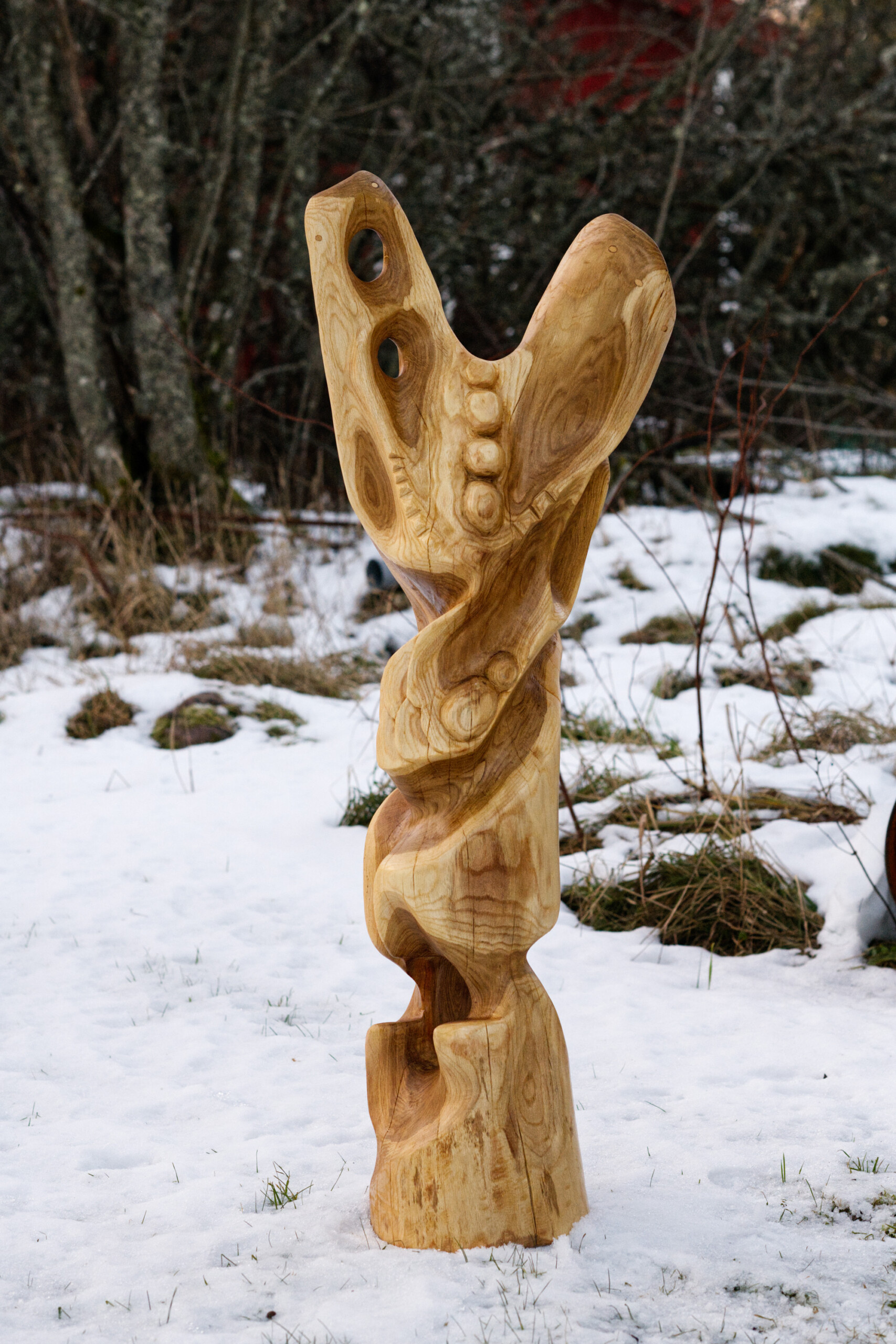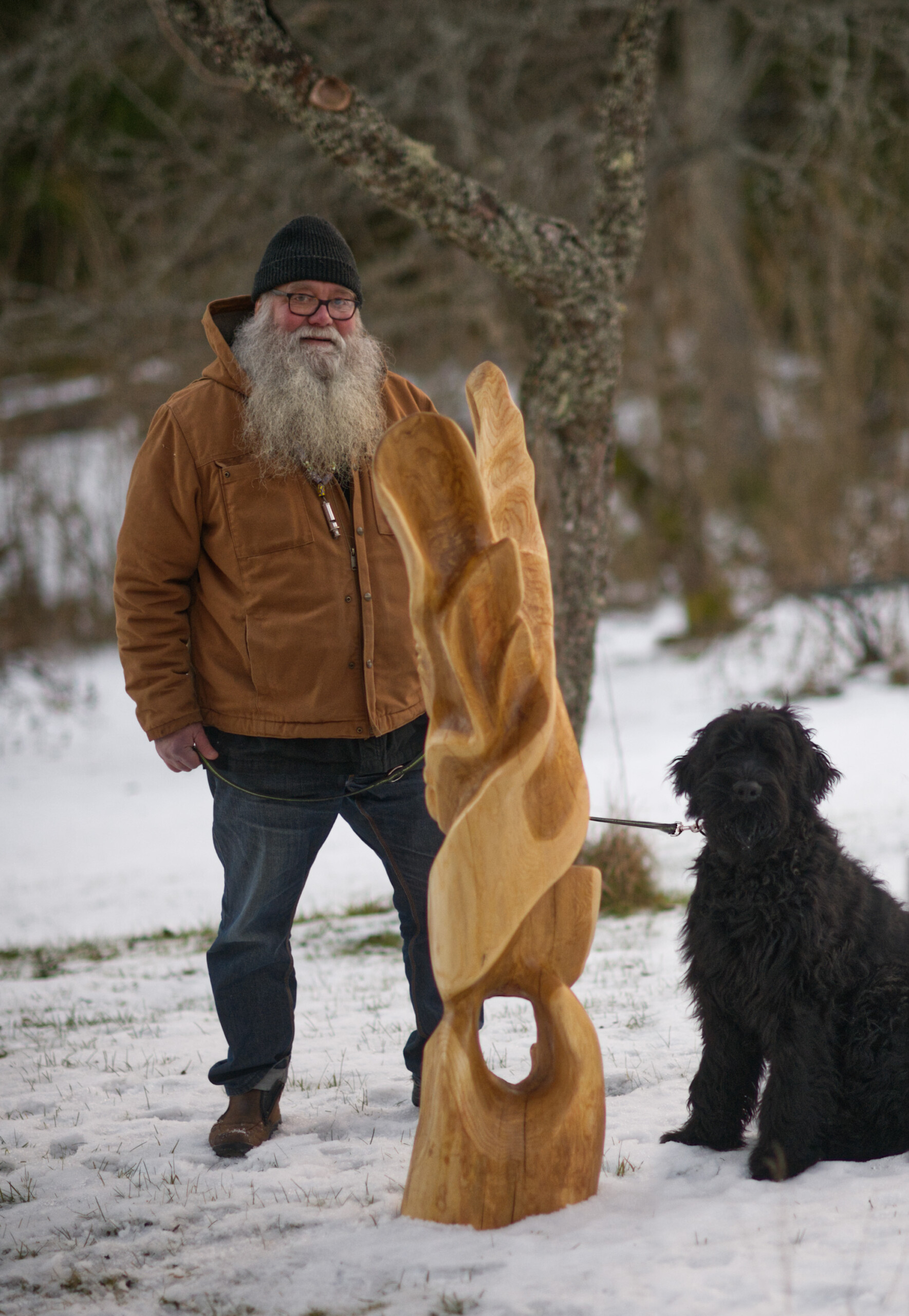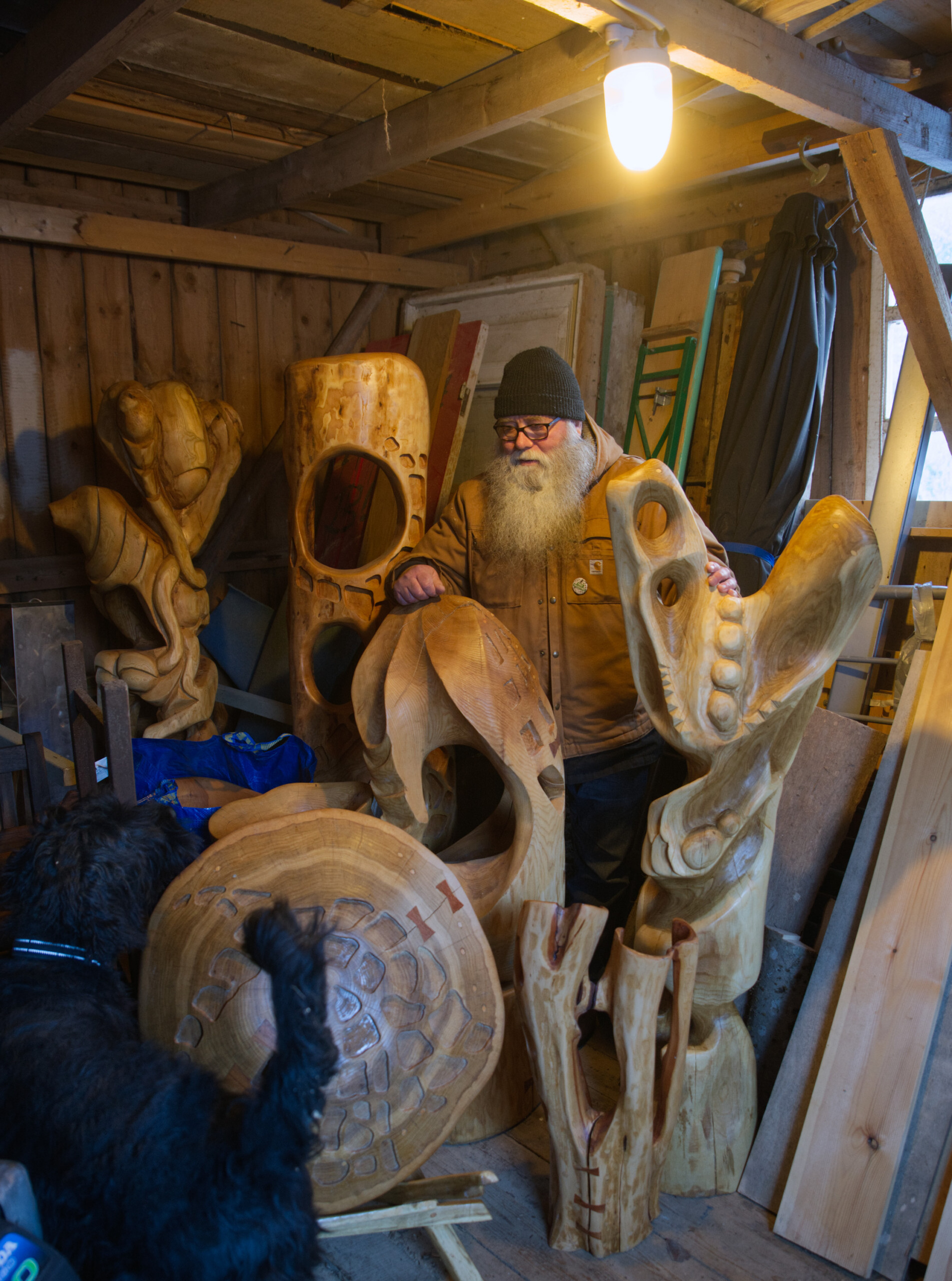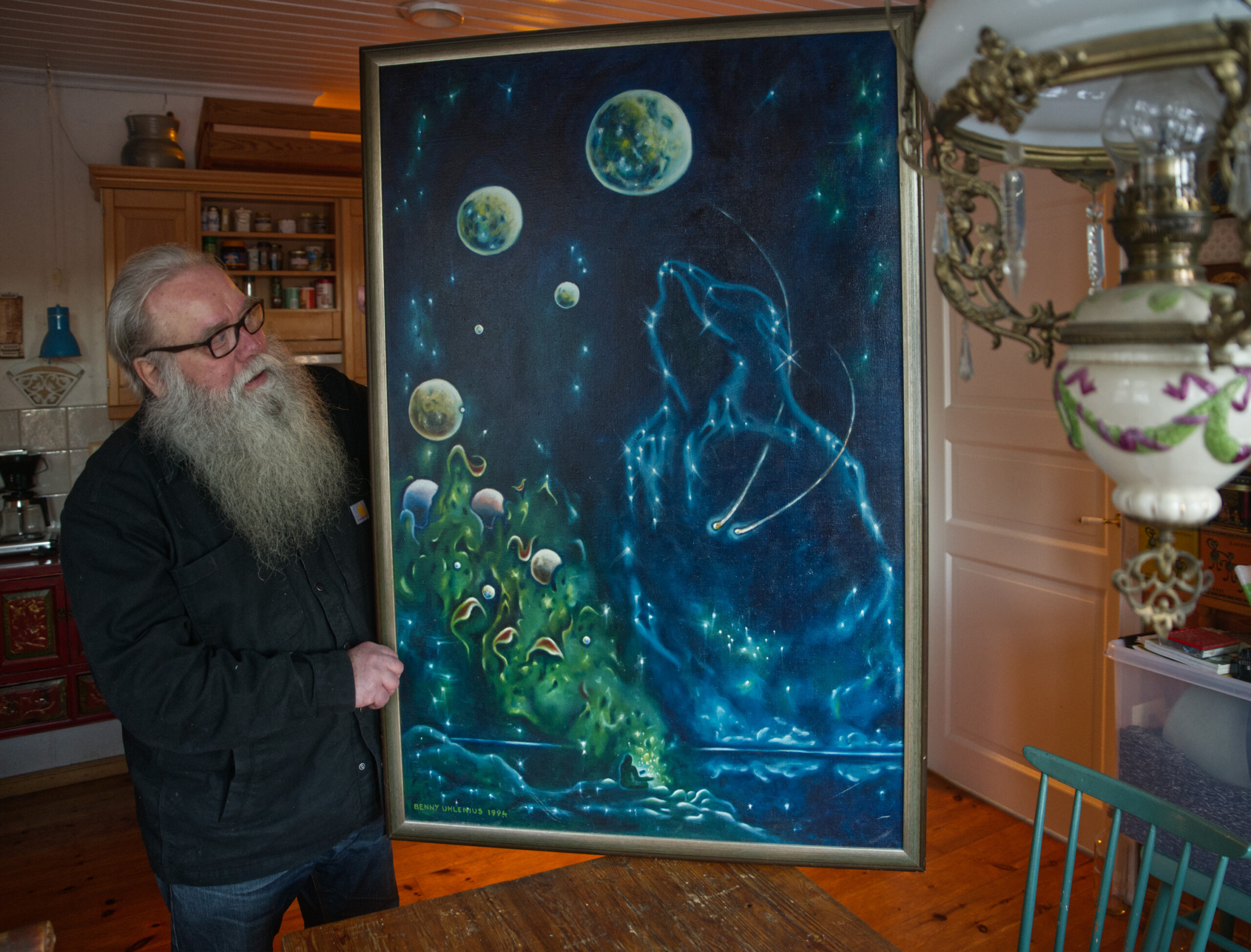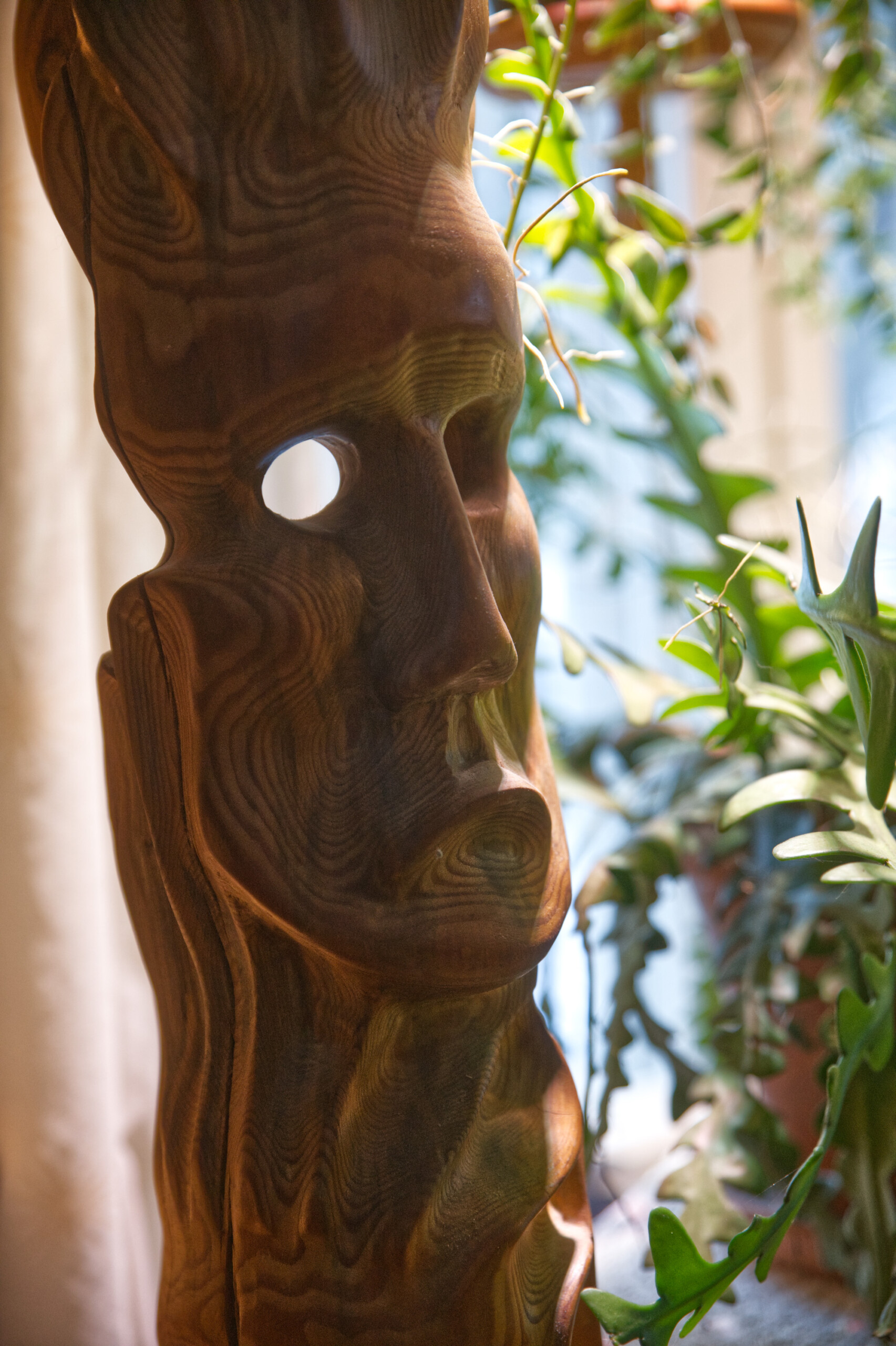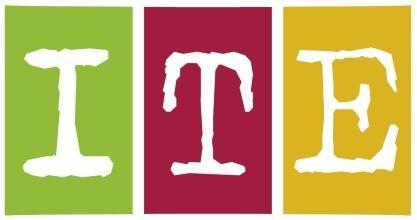Benny Uhlenius
Inkoo (1954)
The ability to create spontaneous ITE art can be a huge resource for the artist. Art can add meaning to its creator’s life. Artistic narratives can sometimes rescue people from even their worst crises.
Benny Uhlenius was young in the Age of Aquarius and led a drug-fuelled hippie life with everything that went with it. He didn’t have problems at home, but the spirit of the time, with its beautiful ideas of opposing war and hard values, alienated the sixteen-year-old from the values of the establishment. His circle of friends took drugs to express their rebellion against the stuck-in-the-rut world of the grown-ups. It was only years later that the true nature of the drugs became obvious. The rebellion faded and some of his friends died, but to everyone’s surprise, Uhlenius, in his thirties, managed to get clean, and he even studied social sciences.
Uhlenius has tried to shake off the memories of his life as a drug addict many times but has always had to admit that those days are part of the story of his life. If you can’t erase the past, turn it into a strength. Mistakes that Uhlenius made earlier turned out to be valuable assets in his therapy work with prisoners. The power of peer support is immense, and he managed to help hardened criminals find a new direction and start healing. He says that it is a question of redefining your role in life and correcting a distorted sense of identity.
Ancient archetypes offer help
All the stories in the world go back to ancient archetypal characters and events. About a dozen archetypes, such as ruler, caregiver and warrior, describe the spiritual stages of human development and the roles we assume for ourselves. Fairy tales, in particular, teach us about the dangers and opportunities inherent in these archetypes.
Uhlenius likes to talk about the Jungian theory of archetypes, and he has good reasons for doing so. His salvation required support from his peers but also an adaptation training course, which included a year-long socio-dramatic play based on the archetypes.
The therapy group that studied the archetypes arranged ITE theatre performances. Uhlenius was given a chance to nominate people from the group to perform certain archetypes. In one performance, he was chosen for the role of a shaman, and he came to understand his attitude towards the world around him when he found himself in a serious conflict with the play’s ruler. Uhlenius realised that he was looking at his life and the world as if he were standing outside it, and he was always prepared for a collision. Anyone could have told him this, but it would have been of no use – it was only when he was in the role that he saw and understood his situation. The play went on for a year and was a journey during which he started to become whole again.
Uhlenius says he suffered from a severe rash as a baby and had to spend the first years of his life in isolation in hospital. When he returned to a normal environment at the age of three, he did not recognise anything around him. He had thought the world was made up of the hospital room and various treatments. He looked at the world in wonder and could not find his place. He became an outsider, an observer of life.
Uhlenius is interested in using the archetypes to start spiritual growth processes, and he is particularly fascinated by the archetype of the shaman. The shaman lives outside the village, observes and analyses the community but is also painfully aware of being a stranger. The shaman can see the problems of the community and individuals more closely: he is not only a sage but also a healer. The shamanic calling is also a burden, a potential way to destruction and death. This is the price of knowledge as well as of being an outsider.
Uhlenius does not liken himself to a shaman, though that is a thought he finds hard to escape. He was born an outsider, almost destroyed, and returned to his community as a healer. But he is no longer a teacher and guide. Retirement involved a fundamental shift in identity. In fact, it was an initiation rite, made obvious to others by the tattoo on his arm and his big beard. Since then, he has preferred to be a mystical artist and woodworker.
Creative and agile mind
Uhlenius has noticed that the life-supporting power of art continues throughout life. Even when he was younger he made paintings inspired by album covers and hippie surrealism, but art has become even more important to him now that he is retired. He lives alone in the remote countryside, and art provides him with a routine and keeps his thoughts in order. He paints in the winter and carves wood in the summer.
“For me, making art has always been therapy for my sense of insecurity – ITE therapy. The fact that I’m an ITE artist does not mean that I am an amateur in relation to professional artists but that I feel like a professional artist as an ITE artist.”
Uhlenius’s large oil paintings are also studies on archetypes. Their subjects are often inspired by something he sees in the media and, perhaps, reactions to questions raised by the contradictions in the world. Uhlenius’s works are also a kind of subconscious exploration, paths to knowledge and insight.
“I always have an idea when I start working on a piece, but I’m still amazed by the outcome. It often takes a long time for me to understand what the work and the process try to tell me.”
Saying that you make art for therapeutic reasons is often seen to lower the artistic value of the works, but the opposite may well be true: important art cannot be created unless the process involves some sort of self-therapy. Other kinds of art can be superficial and less meaningful – at least for the artists themselves.
The meaning of the archetypal figures in the paintings only unfolds fully when explained by the artist, but with his wooden works, Uhlenius speaks a universal language. His skilfully executed sculptures don’t need any explanations. His works look like they originate from another world – and maybe they do. They are visions of a subconscious world, like images of a god created by a primitive tribe or cult artifacts used as vehicles to reach the afterlife. Perhaps they are creations of an archetype even more mysterious than a woodworker?
Text and images: Veli Granö
